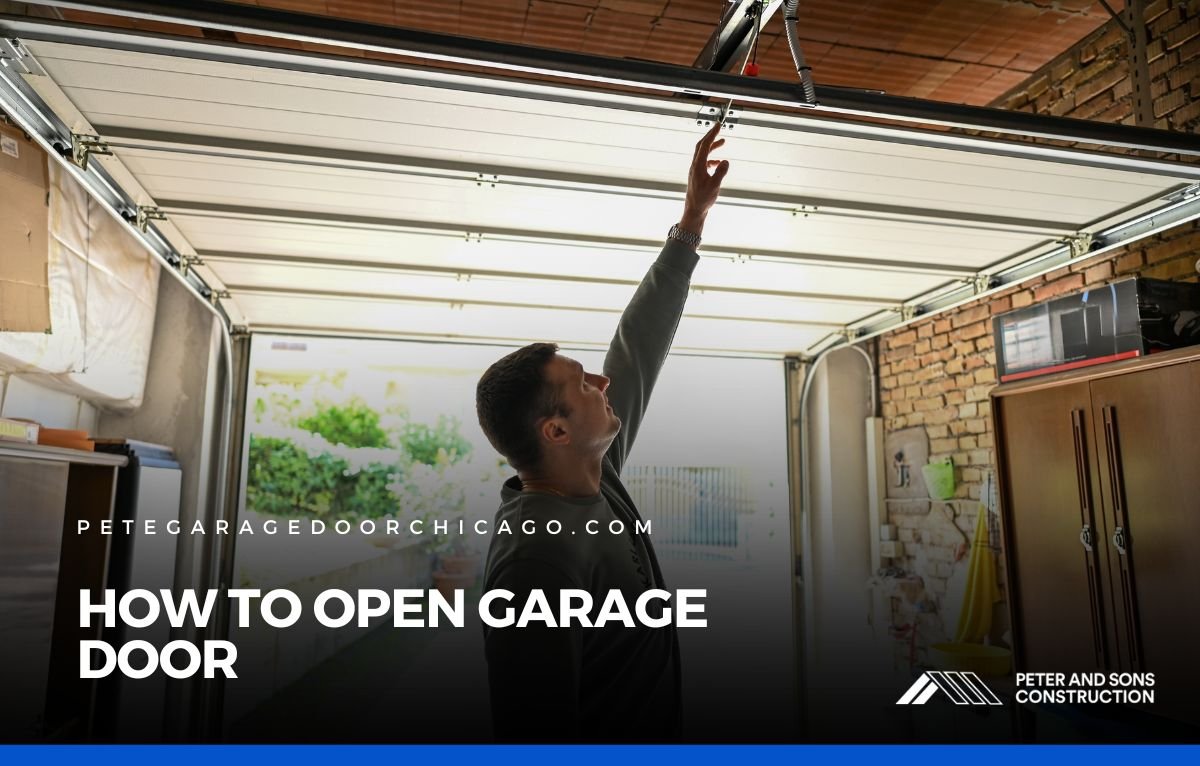How to Open a Garage Door With a Broken Spring
- Editorial Team
- September 26, 2025
- 3:10 pm

A garage door depends on two critical parts to move smoothly: the springs and the cables.
Springs carry the tension that counterbalances the heavy weight of the door, and cables guide that weight as the door opens and closes.
When both fail at the same time, the door is not only stuck but also dangerous.
If you have ever faced this situation and wondered how to open a garage door with a broken spring and cable, the most important thing to remember is safety.
The wrong move could damage the entire system or lead to injury.
Some homeowners may need to open the door temporarily, for example, to move a car out in an emergency. Handling it carefully and understanding the risks is the best way to approach the situation.
Why a Broken Spring and Cable Is So Serious
A single broken spring or loose cable is already a hassle, but when both are damaged, the door loses its main sources of balance and support.
Springs offset the door’s weight, while cables control its alignment. Without both, the full weight of the garage door presses down on the tracks, rollers, and opener.
That’s why trying to force the door open by pressing the opener button can burn out the motor or bend the rails.
Attempting to lift it without a plan can strain your back or cause the door to come off track. This situation is one of the most difficult garage door failures a homeowner can face.
Decide if You Really Need to Open It
The safest choice is often to leave the door closed until repairs are made. But emergencies happen, and sometimes leaving it shut is not an option.
If your car is trapped inside or you need to secure the home, you may need to open the door temporarily.
Ask yourself: is the door already partway open or completely down?
A door stuck in the down position will be heavier and harder to lift than one that failed halfway. That difference matters when planning your next move.
How to Prepare Before Lifting the Door
If you’ve decided you must open the door, preparation is key. Do not rush into lifting it without making sure everything is secure.
- Disconnect the garage door opener. Pull the red emergency release cord to disconnect the door from the motor system. This ensures the opener does not engage while you’re working.
- Gather help. Never try to lift the door alone when both the spring and cable are broken. The weight can exceed 150 pounds, and uneven lifting could cause the door to jam or tip.
- Protect the area. Clear any items from near the tracks. Have one or two people steadying the door on each side before attempting to lift.
Lifting the Door Manually
Once everything is ready, stand with a firm grip on the bottom handle or edge of the door. With your helpers in position, lift slowly and evenly.
Do not jerk or pull quickly, as the weight of the door can shift without spring tension to balance it.
As you raise it, be mindful that the door will feel heavier than usual. In some cases, it may be too heavy to lift at all without professional tools.
If you manage to lift it fully, use locking pliers or a sturdy object to hold the track in place so the door does not slide back down.
Keep in mind that this method is only a temporary solution. The door is not safe to use regularly in this condition, and forcing it open multiple times can cause additional damage.
Common Mistakes to Avoid
Homeowners often make errors when dealing with a broken spring and cable because they underestimate the door’s weight and force. Some of the most common mistakes include:
- Trying to use the opener after disconnecting it, which strains the motor.
- Attempting to lift the door alone, risking injury or a crooked lift.
- Failing to secure the door once it’s raised, allowing it to slam back down.
- Ignoring the need for replacement parts and trying to reuse broken cables.
Each of these mistakes can turn a tough situation into a more dangerous one.
Preventing the Problem in the Future
It’s impossible to predict exactly when a spring or cable will fail, but regular maintenance greatly reduces the chances of both breaking at the same time.
Start by inspecting the cables and springs every few months for signs of rust, fraying, or small gaps. These small warnings usually appear before a complete break.
Keeping moving parts like springs, rollers, and hinges lubricated with a silicone spray also reduces strain and helps the system run smoothly.
Make it a habit to clear the tracks of dust and debris, since buildup can cause alignment problems. Twice a year, test the door by disconnecting the opener and lifting it manually to check if it stays balanced.
Finally, scheduling a professional tune-up every year or so adds another layer of protection, since a trained eye can catch problems you might miss.
These small efforts go a long way in keeping your garage door safe and reliable.
When to Call a Professional Immediately
Opening a garage door with a broken spring and cable on your own is never a long-term solution.
If the door feels immovable or slams down when you try to raise it, stop immediately. Those are signs that the weight is too much for manual lifting.
In this case, a professional technician is the safest option. They have the tools to handle the heavy weight, reset the springs, and install new cables.
For homeowners in Niles, IL, having someone local like Peter and Sons Construction means the problem can be resolved quickly, often the same day.
Handle It Now, So It Doesn’t Get Worse
Learning how to open a garage door with a broken spring and cable is useful in an emergency, but it should always be approached with caution.
The goal is to get access temporarily, not to keep operating the door this way. For a long-term fix, the springs and cables need to be replaced and the door reset for balance.
If you’re stuck in this situation, call Peter and Sons Construction for help.
We’ve worked with countless homeowners across Niles to safely repair garage doors, replace springs and cables, and restore reliable movement.
One call can save you from injury, wasted effort, and more expensive repairs down the road.



